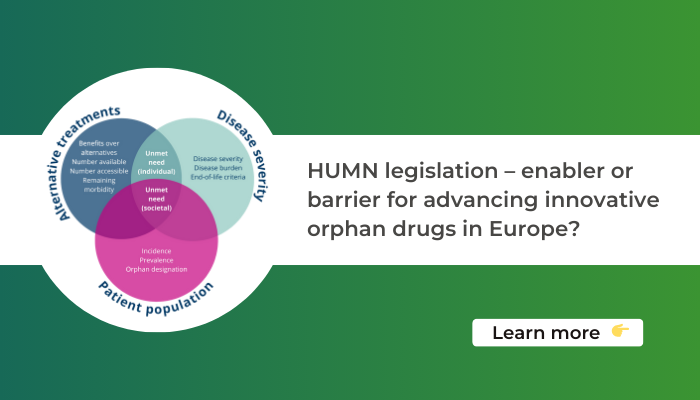Introduction
The EU Pharmaceutical Package is a reform proposed by the European Commission (EC) in April this year as part of implementing the Pharmaceutical Strategy for Europe. It aims to revise, replace and simplify existing laws constituting the EU pharmaceutical strategy. A primary focus of this reform is to strengthen investment in medicinal products where research is most needed but entails greater risks.
Despite the overall objective of encouraging innovation being welcomed by commentators from the pharmaceutical and healthcare sectors, the details of the proposed reform sparked controversy. The critical voices include European Confederation of Pharmaceutical Entrepreneurs (EUCOPE), European Federation of Pharmaceutical Industries and Associations (EFPIA), and the German Ministry of Health.
How is it that the legislation aiming to foster innovation is instead accused of impeding the process?
What is the package looking to achieve?
In its efforts to strengthen investment in crucial medicinal research, the Package introduces criterion-based definitions of Unmet Medical Need (UMN) and High Unmet Medical Need (HUMN). It aims to assist regulatory and HTA bodies in identifying genuinely innovative products and to provide regulatory incentives for their developers. The overarching goal is to steer the business model towards a needs-driven approach, particularly to invigorate the advancement of orphan drugs in indications where there are currently no approved treatments (these comprise as many as 90% of orphan diseases).
What are the key changes introduced by HUMN legislation?
In the new HUMN legislation, orphan drugs would be considered to address a HUMN if:
1. There is no authorised medicine for the condition, or the new product brings exceptional therapeutic advancement; and
2. The new product results in a meaningful reduction in disease morbidity or mortality.
Additionally, the proposed reform will affect all medicines with the potential to obtain orphan designation:
| Previous legislation | Proposed EU pharmaceutical package | |
| Orphan designation criteria | It must be unlikely that the medicine, without the benefits derived from orphan status, would generate sufficient return to justify the investment | The criterion on the basis of return on investment abolished. EMA may set alternative criteria for certain orphan conditions if necessary (criteria to be laid down in legislation) |
| Orphan Designation validity timeframe | No timeframe | Valid for 7 years (can be extended based on justified request) |
| Orphan Market Exclusivity (OME) Period | 10 years of OME period | OME may range from 9 to 13 years · 10 years if the drug is addressing HUMN · 9 years for any other orphan drug Possible extensions: +1 year for launching drugs in all EU member states within two years of MA +1 year for new therapeutic indications for a different orphan condition (granted up to 2 times) |
What is the potential impact of the reform?
However, the new definition of HUMN raised concerns among industry and patient associations who argue it carries the risk of disregarding existing unmet needs. They saw potential difficulties in establishing a fixed HUMN designation in rare diseases where the effectiveness of existing treatments varies largely between patients, and in chronic diseases where the severity of symptoms fluctuates over time.
Moreover, mandating proof of ‘meaningful reduction of mortality or morbidity’ during the early stages of product development fails to acknowledge the inherent unpredictability associated with potentially innovative treatments. As the definition of HUMN effectively categorizes patients and confers labels on therapies, products lacking the HUMN label may encounter increased difficulties during country-level price and access negotiations.
The reform also proposes moving beyond a uniform strategy where all orphan therapies are granted a fixed Orphan Market Exclusivity (OME) period, introducing modulation contingent on specific criteria. Criterium of launching the product across all EU countries within the stringent timeline might be challenging to meet especially for smaller manufacturers, especially as some Member States lack essential infrastructure, patient populations, or scientific knowledge required for certain therapies.
Conclusion
With the aim of steering development towards innovation, the EC may actually make the industry apprehensive to invest in Europe; reducing incentives, defining HUMN and introducing conditionalities will undermine predictability.
These changes will particularly impact small and mid-sized companies, which may lack the necessary infrastructure and resources to effectively manage rigid requirements and increased uncertainty associated with the reform. The proposals are now in the hands of the co-legislators – it will be interesting to see if and how stakeholders’ concerns will be addressed.
Join us for an upcoming Orphan Drug webinar: Orphan Medicine Market Access in Europe: Growing Challenges Ahead?
Don’t miss our presence at the World Orphan Drug Congress 2023: Book a meeting with us
Sources:
European Commission. A pharmaceutical strategy for Europe. Available at: https://health.ec.europa.eu/medicinal-products/pharmaceutical-strategy-europe_en
2. European Commission. Reform of the EU pharmaceutical legislation. Available at: https://health.ec.europa.eu/medicinal-products/pharmaceutical-strategy-europe/reform-eu-pharmaceutical-legislation_en
3. EUCOPE’s statement on the Commission’s proposal for the EU Pharmaceutical Package. Available at: https://www.eucope.org/eucopes-statement-on-the-commissions-proposal-for-the-eu-pharmaceutical-package/
4. EFPIA. EU pharma-legislation risks sabotaging Europe’s life science industry putting European patients further away from the cutting-edge of healthcare. Available at: https://www.efpia.eu/news-events/the-efpia-view/statements-press-releases/eu-pharma-legislation-risks-sabotaging-europe-s-life-science-industry-putting-european-patients-further-away-from-the-cutting-edge-of-healthcare/
5. Financial Times. Germany clashes with other EU states on pharma regulation overhaul. Available at: https://www.ft.com/content/55d04217-aa20-48f7-b636-aeaae3e63604
6. Labiotech. Assessing the EU Pharmaceutical Package – Positives, negatives and the impact on smaller pharma and biotech companies. Available at: https://www.labiotech.eu/partner/eu-pharmaceutical-package-2023-eucope/
